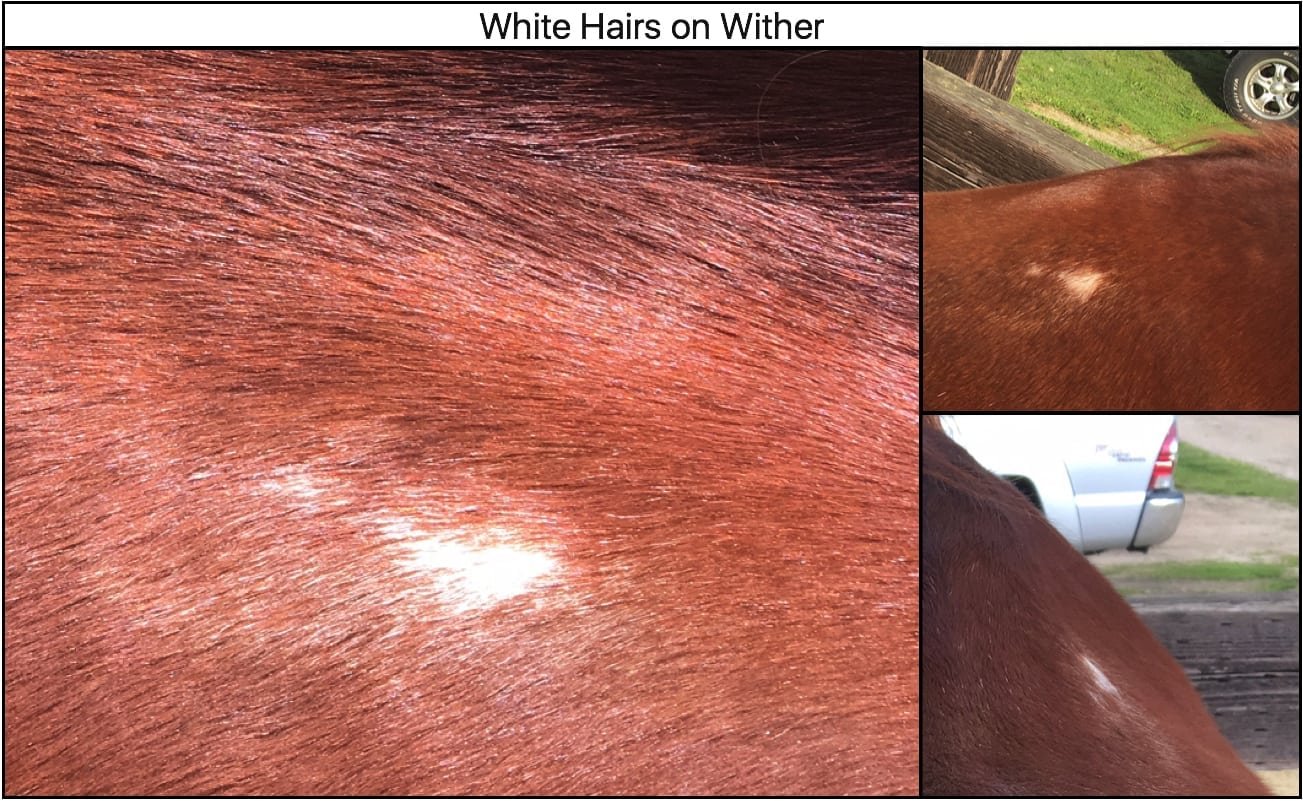Tree Angle: Part 2 – White Hairs
I had initially planned to follow up my Tree Angle: Part 1 – Too Wide with a post about angles being narrow. Then, this week I had the opportunity to work with a lovely Arabian mare named Foxy and she inspired me to change my next blog post onto one about white hairs and what causes them. Now Foxy had just been purchased by a new owner who wanted to make sure she started out on the right foot with her new horse and wanted a saddle evaluation done. She saw the white hairs on Foxy’s back, from a previous saddle, and wanted to make sure that she didn’t cause any further damage.
Foxy’s wither from the right side.
So, first of all, I need to talk about what causes this to happen. There are many different conjectures about white hairs under saddle but before we show the saddle we need to understand the science. All hair is originally white. It gets its pigment, melanin, through specialized cells. These specialized cells are in every hair follicle on your horse (and you too) and they are called Melanocytes. These cells secrete melanin into the hair follicles and give hair its characteristic color. It is not the death of the hair follicle itself as the hair continues to be healthy and to grow, but damage to the cells that pigment the hair.
So, now we look at the saddle. When our tree angle is too wide and puts undue pressure on the side of the wither these cells become damaged and can no longer pump this melanin pigment into the hair follicle. This is why white hairs usually show up in the spring or the fall when the horse’s coat changes for the season. If caught very quickly, when just a few hairs are white, through correct saddle fit these cells can actually repair and the white hairs will disappear with the next coat change. However if the pressure issue is not resolved, or was too severe initially, the cells become permanently damaged and can no longer perform the function of pigmenting the hair. Then you are left with permanent white hairs, as is the case with Foxy. You will also see this white hair from blanket rubs or fungus scars on a horse’s back. Both of these can also cause permanent damage to the Melanocytes.
Tree angle too wide — edited to show white hair location.
When you see white hairs in the saddle area of your horse it is imperative that you have your equipment evaluated immediately. This trauma is most often caused by focal pressure due to poor saddle fit. The PSI (pounds per square inch) is exceeding what the horse’s body can carry in such a localized location. I have also seen these white hairs under the seat bones of the rider in a treeless saddle when the saddle isn’t dispersing the riders wait appropriately across the back. If these white hairs are not addressed it can lead to sever back pain and nerve damage in the horse’s back.



